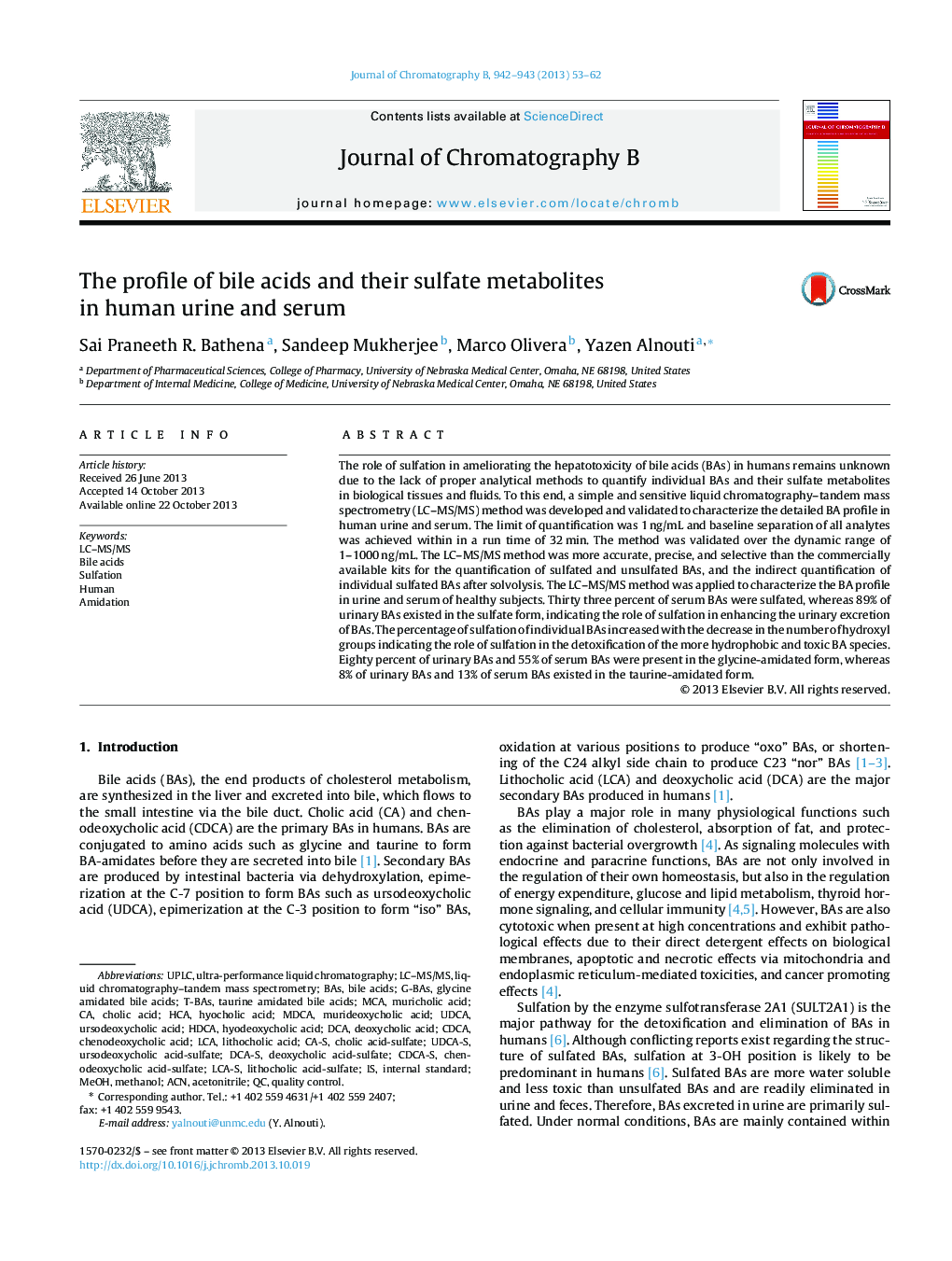| کد مقاله | کد نشریه | سال انتشار | مقاله انگلیسی | نسخه تمام متن |
|---|---|---|---|---|
| 1212924 | 1494094 | 2013 | 10 صفحه PDF | دانلود رایگان |

• A LC–MS/MS method was developed and applied to characterize the bile acid profile in urine and serum of healthy subjects.
• The LC–MS/MS method was compared with the enzymatic and solvolysis assays.
• Percentage sulfation of individual bile acids (BAs) increased with the decrease in the number of hydroxyl groups.
• Urinary and serum BAs existed predominantly in the glycine-amidated form.
• Most BAs are excreted in the sulfated form in urine indicating the role of sulfation in enhancing the urinary excretion of BAs.
The role of sulfation in ameliorating the hepatotoxicity of bile acids (BAs) in humans remains unknown due to the lack of proper analytical methods to quantify individual BAs and their sulfate metabolites in biological tissues and fluids. To this end, a simple and sensitive liquid chromatography–tandem mass spectrometry (LC–MS/MS) method was developed and validated to characterize the detailed BA profile in human urine and serum. The limit of quantification was 1 ng/mL and baseline separation of all analytes was achieved within in a run time of 32 min. The method was validated over the dynamic range of 1–1000 ng/mL. The LC–MS/MS method was more accurate, precise, and selective than the commercially available kits for the quantification of sulfated and unsulfated BAs, and the indirect quantification of individual sulfated BAs after solvolysis. The LC–MS/MS method was applied to characterize the BA profile in urine and serum of healthy subjects. Thirty three percent of serum BAs were sulfated, whereas 89% of urinary BAs existed in the sulfate form, indicating the role of sulfation in enhancing the urinary excretion of BAs. The percentage of sulfation of individual BAs increased with the decrease in the number of hydroxyl groups indicating the role of sulfation in the detoxification of the more hydrophobic and toxic BA species. Eighty percent of urinary BAs and 55% of serum BAs were present in the glycine-amidated form, whereas 8% of urinary BAs and 13% of serum BAs existed in the taurine-amidated form.
Journal: Journal of Chromatography B - Volumes 942–943, 30 December 2013, Pages 53–62